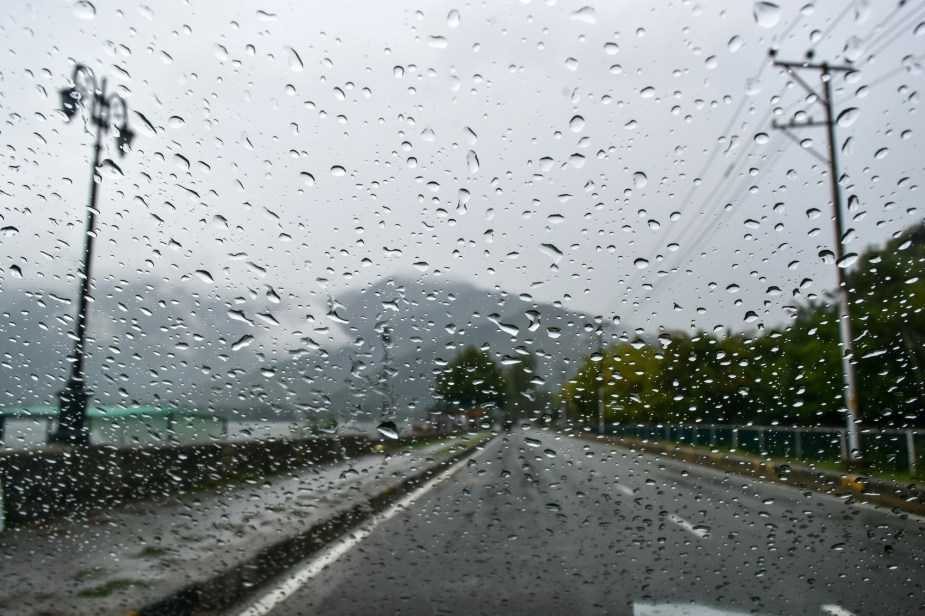
Try This Trick When Wipers Won’t Get Rid of Water Drops
Driving through the rain can be very frustrating and potentially dangerous when water droplets linger on your vehicle. Persistent water spots can also appear after you drive through a deep puddle that splashes your windshield. That’s because they’re not just made of pure water. Each drop also contains contaminants like dirt or grime. So how can you get rid of water drops?
Those water droplets are even more likely to stick if you live in an area with bad air quality. A decent pair of windshield wipers might not be enough to solve the problem. Try these tips if all they do is smear the water across your field of vision.
Buy a glass cleaner could help get rid of water drops

Firestone says that a strong glass cleaner is sometimes the only solution for removing annoying water drops. Automotive suppliers make specialized cleaning solutions for auto glass, and many of them are cheaper than $10. If you’re not fond of spray-on solutions, glass cleaning wipes are also available.
You’ll also need a microfiber towel to wipe down the glass for the spray-on solution. Start on one side of the windshield in vertical lines, then switch to horizontal strokes. This is the best method to prevent streaking as you clean.
After applying the glass solution, it’s time for a water-repelling treatment. You can spray it on the windshield or distribute the product around the glass with a microfiber towel.
Most water repellents must sit for at least 10 minutes but always follow the instructions for best results. After this, you can buff the glass with a paper towel or soft piece of cloth.
Other solutions for when you can’t get rid of water drops
Deploying wiper fluid while you’re operating your wipers at the same time will likely eliminate water droplets faster. You might need to switch out that fluid for a stronger formula if it doesn’t.
Sometimes excessive water droplets are left behind if your wipers aren’t working properly. A chattering noise whenever the wipers are in operation indicates that the wiper arm might be out of shape.
If the wiper isn’t parallel to the glass, you’ll need to set it back in the right place. Any mechanic can do this for you, but Firestone also says you can do it yourself with pliers. However, if rust build-up prevents you from moving the arm, you might need new wipers entirely.
If the wiper arm is in good shape, try cleaning the windshield wipers themselves. The edge of the blade should be cleaned with rubbing alcohol. Apply warm water and soap to the rest of the blade’s surface area.
Treating water droplets immediately is another good way to prevent build-up on your windshield. When a rainstorm passes, or you’re finished washing your car, dry it thoroughly. A ceramic coating for your windshield can also be effective for preventing long-term damage from dirty water spots.
Sometimes new windshield wipers make all the difference
If none of these solutions work, consider upgrading to a better pair of windshield wipers. In addition to the arms cracking and rusting over time, the rubber portion of the blade will wear away. When that happens, your blades won’t be able to clear away water effectively.
Auto care professionals recommend that you replace your windshield wipers at least every six months. You may have to change them earlier if you live in a tropical climate that receives extra yearly rainfall.
When choosing your new wipers, stick with a trusted brand with good reviews. The best set might be a little more expensive, but they’ll likely give you the best visibility during a downpour.


